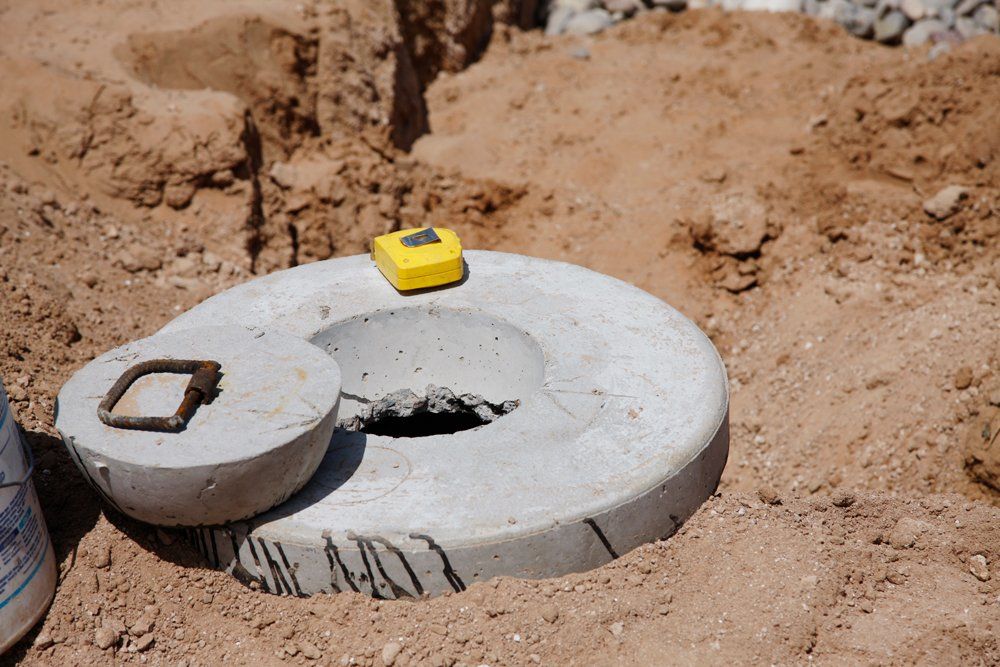A Beginner’s Guide to a Smart Septic System
- By Admin
- •
- 14 Mar, 2022
- •

Proper maintenance of your septic system will help prevent issues such as blockage, backflow, and clogged drainfields. But to catch such issues early, you need an effective way of monitoring your equipment.
Smart sensors installed on your septic system are a game-changer when it comes to maintenance. Through real-time monitoring, you can detect issues early and schedule repair or replacement. Smart septic systems also record usage data in real-time, providing insights into equipment performance, cost, and life expectancy.
You may be wondering how to make your septic system smart. Here's how to get started.
1) Install Water-Level Monitors
Water-level monitors are a crucial part of any septic system. They work by keeping track of water levels in your tank and sending a notification if levels get too high or low. Real-time monitoring is important for several reasons.
First, high water levels indicate that you may be experiencing a blockage. If the anaerobic bacteria in your tank aren't decomposing waste fast enough, the water level will rise and cause backflow in your drainage pipes. Similarly, low water levels may indicate a leak in your pipes or in the tank itself.
With a water-level monitor installed, any abnormal leveling will trigger a notification to your phone or tablet. In addition, most water-level monitors can attach to the side of your tank, making the installation process quick and cost-effective.
2) Use an Intuitive Control Panel
The control panel is an app or website that sends signals to your phone or other devices. This app allows you to see how your septic system performs in real-time. It also gives you the ability to control various aspects of your septic system. For example, you can use the control panel to:
Think of control panels as the brains behind your smart septic system. Not only do they provide insights into how your equipment is operating, but they also act as a database for storing user information. For example, you can refer to your control panel to retrieve septic tank water levels from a specific period. Such information helps determine whether you need to schedule maintenance or upgrade your equipment.
3) Monitor Pump Activity
Septic tank pumps work by removing wastewater from the septic tank and sending it to the drainfield. By making your pump smart, you can avoid flooding your drainfield or contaminating the surrounding soil.
Smart septic pumps have a sensor installed to control pump activity. The pump works in conjunction with a float switch, which activates when wastewater reaches a certain level. Smart sensors installed on your pump can monitor float switch activation, wastewater composition, and the amount of water released into your drainfield. By working alongside water-level monitors, pump sensors give a full picture of wastewater treatment in your septic tank.
4) Install Drainfield sensors
Drainfield sensors monitor soil infiltration to ensure that clogging doesn't occur. Once treated wastewater ends up in your drainfield, these sensors will record the infiltration rate, soil composition, and likelihood of blockage.
Sensors can also communicate with smart appliances such as dishwashers and washing machines. For example, if your drainfield becomes clogged, the sensor can trigger your devices to stop running. A proactive approach to drainfield management means that you'll avoid sewage backflow or flooding in your drainfield.
Installing a smart septic system will reduce maintenance costs and increase the lifespan of your equipment. If you need assistance with septic system installation or maintenance, our team at Allen's Septic Tank Service is here to help. We provide various services such as septic tank pumping, installation, and cleaning. Contact us today to learn more about how we can help you maintain your septic system.
Smart sensors installed on your septic system are a game-changer when it comes to maintenance. Through real-time monitoring, you can detect issues early and schedule repair or replacement. Smart septic systems also record usage data in real-time, providing insights into equipment performance, cost, and life expectancy.
You may be wondering how to make your septic system smart. Here's how to get started.
1) Install Water-Level Monitors
Water-level monitors are a crucial part of any septic system. They work by keeping track of water levels in your tank and sending a notification if levels get too high or low. Real-time monitoring is important for several reasons.
First, high water levels indicate that you may be experiencing a blockage. If the anaerobic bacteria in your tank aren't decomposing waste fast enough, the water level will rise and cause backflow in your drainage pipes. Similarly, low water levels may indicate a leak in your pipes or in the tank itself.
With a water-level monitor installed, any abnormal leveling will trigger a notification to your phone or tablet. In addition, most water-level monitors can attach to the side of your tank, making the installation process quick and cost-effective.
2) Use an Intuitive Control Panel
The control panel is an app or website that sends signals to your phone or other devices. This app allows you to see how your septic system performs in real-time. It also gives you the ability to control various aspects of your septic system. For example, you can use the control panel to:
- Start or stop the septic tank pump
- Determine drainfield performance
- View water levels
- Get alerts for abnormal activity
- Link to other smart home appliances such as dishwashers
Think of control panels as the brains behind your smart septic system. Not only do they provide insights into how your equipment is operating, but they also act as a database for storing user information. For example, you can refer to your control panel to retrieve septic tank water levels from a specific period. Such information helps determine whether you need to schedule maintenance or upgrade your equipment.
3) Monitor Pump Activity
Septic tank pumps work by removing wastewater from the septic tank and sending it to the drainfield. By making your pump smart, you can avoid flooding your drainfield or contaminating the surrounding soil.
Smart septic pumps have a sensor installed to control pump activity. The pump works in conjunction with a float switch, which activates when wastewater reaches a certain level. Smart sensors installed on your pump can monitor float switch activation, wastewater composition, and the amount of water released into your drainfield. By working alongside water-level monitors, pump sensors give a full picture of wastewater treatment in your septic tank.
4) Install Drainfield sensors
Drainfield sensors monitor soil infiltration to ensure that clogging doesn't occur. Once treated wastewater ends up in your drainfield, these sensors will record the infiltration rate, soil composition, and likelihood of blockage.
Sensors can also communicate with smart appliances such as dishwashers and washing machines. For example, if your drainfield becomes clogged, the sensor can trigger your devices to stop running. A proactive approach to drainfield management means that you'll avoid sewage backflow or flooding in your drainfield.
Installing a smart septic system will reduce maintenance costs and increase the lifespan of your equipment. If you need assistance with septic system installation or maintenance, our team at Allen's Septic Tank Service is here to help. We provide various services such as septic tank pumping, installation, and cleaning. Contact us today to learn more about how we can help you maintain your septic system.
Septic tanks are important for the treatment of wastewater treatment. Read this blog on the various aspects of septic tank replacement.
When you grow up in a house, you typically won't have a manual of what to flush down the toilet. Discover common family flushing traditions to avoid.
Septic systems provide an effective solution for wastewater. Read this blog about some considerations to think through before installing a septic system.
What shouldn't go into your septic system? Read this blog to learn what products should not enter your septic system through toilets or drains.
Many appliances in your home are the source of items that can damage your septic system. Discover some of those problematic appliances.
Washing laundry can affect your septic system’s operation. Consider the laundry tips from this blog post to protect your septic tank.
A septic system consists of components located underground that use natural techniques to treat wastewater. See the main types of septic systems for homes.
Septic tanks require proper care and maintenance to function correctly, and this can be complex if you have pets. See septic tank care tips for pet owners.
Maintenance costs for septic tanks can add up, but you do not have to spend a fortune. Learn how proper care can save you money on septic services.
For the best septic tank services, careful considerations are necessary. Discover a few qualities to look for in the septic tank company you hire.

